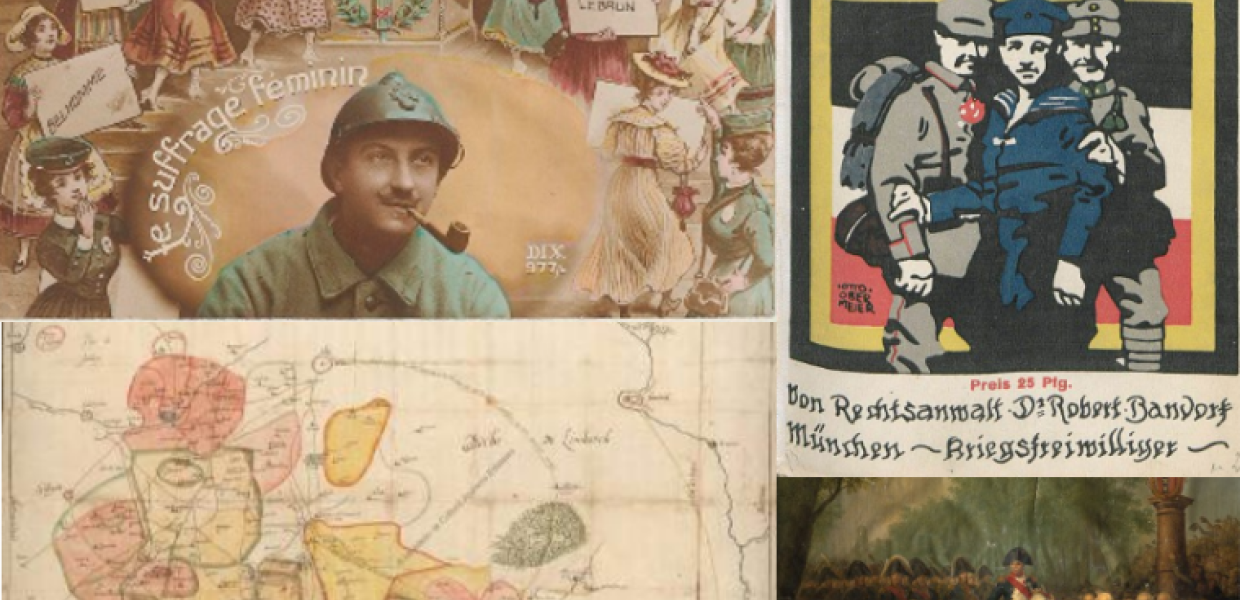Need Inspiration for the History Education Challenge? A Few Ideas

This is the second of two posts with ideas and possibilities for prototypes to re-use Europeana content. Feel free to use them as inspiration for your entries for our History Education Challenge (open till April 14).
There’s also information about the ideation and creation of the pilots developed by Europeana Creative for educational purposes to help you understand the process involved for developing your own digital tool.
Re-use of History Content via Europeana for Educational Purposes
We’re looking for innovative and engaging educational applications relating to history content via Europeana (images, texts, sounds, videos). Too broad? Then think about the potential of original content related to collections of postcards from the First World War, German documents from that conflict, Napoleon artwork, old geographical maps and drawings of famous battles on artwork.
Some samples of the type of content you can re-use for your project proposal.
What could you do with this type of content? In our second co-creation workshop, we were inspired by the development and re-use of content collections such as the ones at The Digital Library of the Netherlands, or 3-D animation of caves with prehistoric drawings at the La grotte de Lascaux website, or interactive lessons at the US National Archives with primary sources to foster historical thinking, or the app Beedocs for multimedia timelines… All very inspiring examples!
What Do We Have Running Right Now?
We have formulated a product definition and requirements, as well as the relevant business model canvas for digital applications.
The idea of developing a learning section for our History Education Pilot on Historiana to stimulate the re-use of digitised heritage available through Europeana in history education came up during the brainstorming. It’s under development now. You can watch a short presentation about it (and some of the work that inspired the development):
A visual project summary (still in beta) by Webtic. (CC BY-SA Europeana Creative)
Do you have similar ideas to build on our pilot? If so, you can submit it as your challenge entry.
Here Are Some Other Ideas
-
Dealing with multiperspectivity: What if students could see very visually the evolution of a city, with different infographic layers to compare how immigrants influence its development? Or if a student could search for a biography of an important historical figure, add historical context and enrich it with related open content about other people, newspapers, buildings, etc.?
-
Compare and contrast: What if students could write a postcard to an ancestor or relative inspired by a selection of postcards sent by others who lived in historically momentous times? Or if they could compare portraits on a timeline or map to learn about the formation of identity over time?
-
Critical analysis of sources: What if students could visualise time by using historical maps and cartoons from different periods given by the teacher, to understand changes over time. Or if a student could identify similarities in propaganda from various wars, with contextual information about the origins and use of war, in order to understand issues that concern governments in wartime.
-
Encourage historical thinking: What if students could see and search through handwritten letters, with options to transcribe and read transcriptions, so they can learn about communication in history? Or if a student could follow or re-live historical scenes or events via Twitter by viewing or communicating old content (documents, postcards, newspapers) that would appear daily, in sequence? The student would not know how the story would end, in order to experience the suspense and uncertainty of the historical events.
-
Innovative ways of presenting a narrative: Students could have their own World War I newsreel using digitised material from the war, record a new voice-over to experience the sights and sounds and the emotional reality of war. Students could create a family tree using portraits of monarchs adding contextual information about the pictures, in order to understand interconnections between European societies.
Diagram of a learning app for geo-locating layers of open content about immigration and discussing about it, produced during the co-creation workshop.
Think you can develop an educational prototype based on any of the above ideas? Or do you have a completely different concept for a digital tool help teaching or learning about history?



